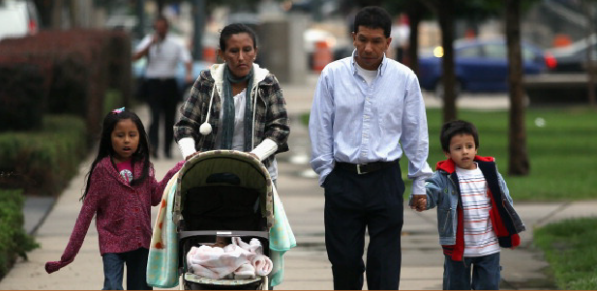The United States remains a
very religious nation. Nine Americans out of 10 say they believe in god and the
bible remains the American best seller, with sales of about 9 million copies
each year.
I.
Religious
Diversity
A. No Official
Religion
The Constitution prohibits the
establishment of a national religion and protects citizens’ right to choose
their own religion. The separation between Church and State prevents the
government from favoring one religion or denomination at the expense of
another. Thus religious freedom is guaranteed.
Apart from the Roman Catholic (under
the authority of the Pope) and the Episcopalian (under the leadership of the
Archbishop of Canterbury) churches, American churches have a very decentralized
structure with authority in congregations. Protestants have no church hierarchy
and church members organize in an assembly and choose their own minister.
Churches of the first settlers soon split up into many different denominations
which explains why there is not one but many types of Protestantism.
American religious diversity was
also made possible because of the size of the country itself: if one group
dissented or was the victim of religious intolerance, it simply moved elsewhere
and founded its own church.
As a result of this freedom, all
major religions are represented today: Protestantism, Catholicism, Judaism,
Islam, Buddhism, Hinduism. (1,500
religious affiliations)
B. “One Nation under God”
One of the greatest paradoxes linked
to religion in the United States is that in spite of the separation of State
and Religion, American society is filled with religion, and Americans
constantly mention God. The Pilgrim Fathers had a mission: create a model
society, in America considered as the new Promised Land.
Americans see themselves as the
Elect, chosen by God to create a unique model of society, based on a high moral
code, austere, work ethic, predestination.
The Influence of religion is visible
everywhere:
·
The National
motto is “One Nation Under God”
·
“In God We
Trust”is engraved on American currency
·
The influence
of religion is visible in private and public sectors
·
Each
American President swears his Oath of Office on the Bible
Prayer used to be compulsory in
school until the School Prayer decision in 1962.
Religion is also often a stepping
stone to political career many of whom were preachers such as . Ex: M L King Jr
& Malcom X
Religion is also a form of socialization,
extra Church activities, social networks, integration
C. Religion, Class
and Race
Religious diversity highlights social and racial differences.
Blacks and whites attend different churches.
Among protestants, Episcopalians are regarded as the “elite” denomination,
while Baptists and Methodists belong to the less wealthy segments of the
population.
At the beginning of the century, Roman Catholics were working class
(low-income Irish members). Now
mainstream churches tend to be middle or upper class, while the more radical
churches appeal to the poor.
II.
The Leading
Religions
D. The
Protestant Denominations
55% of Americans are Protestants with over 200 different denominations, the
most important of which are the Baptists.
Since the 1960’s, the influence of the mainline denominations has gradually
diminished in favor of ore radical church groups. This shift to religious
conservatism shows growing dissatisfaction of many Americans with churches that
are considered as too liberal and permissive.
E. The Roman
Catholic Church
They represent about 28% of Americans. Catholicism was brought by Spanish,
Portuguese and French missionaries and expanded in the early 20th
century.
Looked upon with suspicion during the first decades of our century (they
were believed to be immoral, guilty of paying allegiance to the Pope at the
expense of the United States, and were a favorite target of the KKK in the 20’s).
American Catholics are less respectful of Rome’s guidelines than Europeans
especially when it comes to ethical issues: using birth-control devices and divorce
for instance.
F. Judaism
They represent 2% of the American population. The first Jews came from
Spain and Portugal and they integrated well to their Wasp counterparts. Today about
50% marry with non-Jews. Most knew how to take advantage of the education
system to climb up the social ladder. American Jews play an influential political
and cultural role through their organizations. Today, the survival of Israel is
one of their major preoccupations for which they raise about 300M $ annually.
G. Islam
Muslims represent less than 1% of the American population today. Islam is
the fastest growing religion. Most Muslims are immigrants or descendants of
immigrants from Muslim countries. 24% of African Americans converted to Islam
from Christianity. Many slaves were
originally from Muslim Africa. The appeal of Islam for African-Americans is
thus part for a quest for their lost roots. Islam today suffers from a poor
image in the United States further reinforced by the Word Trade Center bombing
in 1993 and the September 11th attacks of the Twin Towers. As a
result hate crimes against Muslims against Muslims and South East Asians such
as the Sikhs (mistakenly) went up in the months that followed 9/11. Often
associated with terrorism, fanaticism and anti-Semitism, Islam is widely
misunderstood and considered by many Americans with distrust.
III.
Sects and
Cults
To find out about sects and cults in the USA, see the
Chapter on Religion, pp. 151-153, in “Civilisation des Etats-Unis” by Marie
Christine Pauwels, Hachette 2002 available at ISLAIN library under the reference CiAm 010
